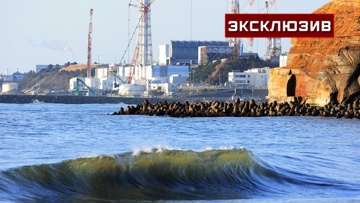The Japanese drainage of water from the Fukushima nuclear power plant could pose an increased risk of cancer to residents of Russia and China if radionuclides are found in the water. Andrey Frolov, co-chairman of the Union of Ecological Organizations of Moscow and editor-in-chief of the environmental newsletter Dom priroda, spoke about it in an interview with Zvezda.
“For the surrounding countries, these are primarily Russia, Korea, Taiwan, the Philippines, China, additional threats arise – currents along Japan can transfer radioactive water to their ribs. The level of pollution not only of water, but also of biological resources may increase. Because bioresources collect radionuclides,” Frolov said.
According to the expert, this will create an additional burden for neighboring countries, since it will be necessary to control bioresources, including fish and algae, and install a rather expensive control system. Otherwise, the population of these countries will be at risk of cancer.
“We are, in fact, 99% what we eat and what we drink. If we eat radioactive products, then naturally it can have a great effect on the body,” Frolov added.
The expert explained that although the accident at the Fukushima-1 nuclear power plant happened 12 years ago, the reactive processes did not stop there, because it was not eliminated. According to him, to avoid a threat, the Japanese should have dismantled the reactors and buried them.
“There is no active nuclear reaction, but the spontaneous reaction continues,” said the ecologist.
According to Frolov, even when the reactors are off, the pumps have to be running to keep the water circulating and cooling the circuits.
“There are a lot of radioactive releases, but the water is slowly starting to get polluted, because it’s not distilled water. It has certain impurities. As they pass through the reactors, these impurities also become radioactive,” Frolov said.
To prevent the water from becoming highly radioactive, it must be periodically updated, which Japan plans to do. To assess the risks of potential contamination, data on the composition of the water and the quantity of radionuclides it contains are necessary. It is this data that the Japanese have not provided.
The expert recalled the consequences of the previous spontaneous discharge of water, which occurred immediately after the accident – the tsunami surged over the fence, and radioactive water poured into the ocean .
“After that, the overall level of radioactivity in the Pacific, although gigantic, doubled. These consequences will be felt for several thousand years,” added the ecologist.
Frolov drew attention to the fact that the risks concern not only Fokushima-1, but also other stopped stations, the number of which is about 60.
“If they continue these leaks now, the level of radioactivity, although the Pacific Ocean is the largest water formation imaginable, will increase further. This, of course, is negative. fact that such a procedure will constantly take place at 60 nuclear power plants,” Frolov said.
In the future, according to the ecologist, this could pose a significant threat to the environment.
“From such a reset, most likely, there will be no consequences, but as a system it poses a great threat. We need to do something about it, ”concluded environmentalist Frolov.
Previously, the Ministry of Natural Resources of the Russian Federation was concerned about Japan’s plans to discharge water from the Fukushima nuclear power plant, because the country had not provided the water purification steps in a form transparent for analysis.
Read the Russia Ukraine News on The Eastern Herald.


